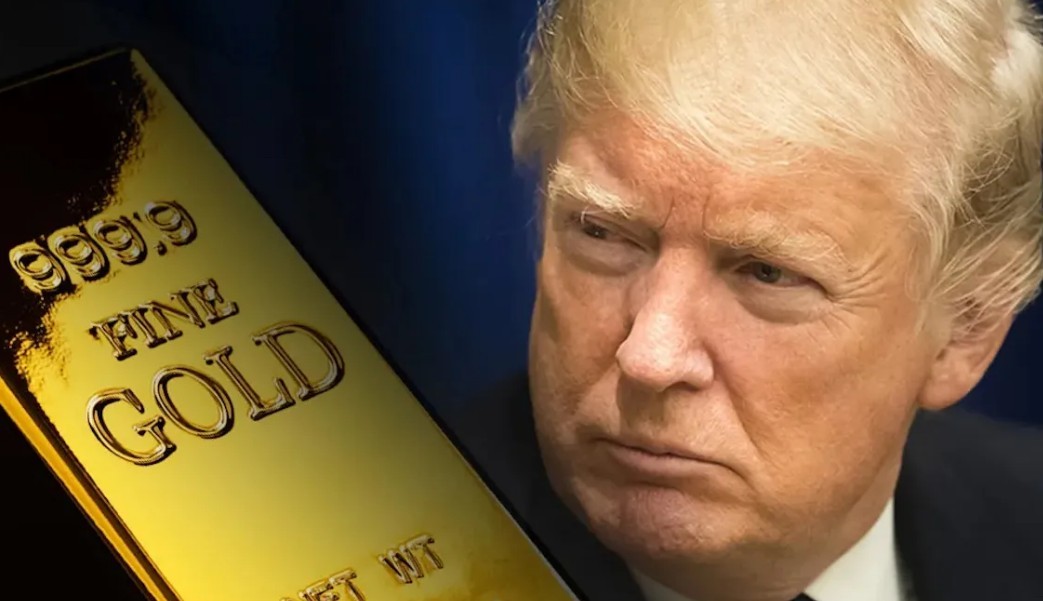Is Gold There? Trump and Musk to Uncover Decades-Old Conspiracies
President Donald Trump and Elon Musk have reignited decades-old conspiracies about the U.S. government's gold reserves at Fort Knox. This week, Trump vowed to take a rare look inside the tightly guard

President Donald Trump and Elon Musk have reignited decades-old conspiracies about the U.S. government's gold reserves at Fort Knox. This week, Trump vowed to take a rare look inside the tightly guarded facility to verify the state of the gold reserves.
Starting on Saturday, Musk shared several social media posts questioning the status of the government's infamous gold reserves at Fort Knox. He asked if the gold is "still there" or "gone" and called for a "live video walkthrough" of the facility. In response, Sen. Rand Paul, R-Ky., endorsed the idea, saying "let's do it" to one of Musk's posts calling for annual audits of Fort Knox.
President Trump joined the conversation late Wednesday, telling reporters, "We hope everything's fine with Fort Knox, but we're going to go to Fort Knox...to make sure the gold is there." He added, "If the gold isn't there, we're going to be very upset."
While there's no evidence to support theories about missing gold, the state of the reserve remains tightly sealed. The U.S. Bullion Depository in Fort Knox, Kentucky, holds 147.3 million troy ounces of gold, which is about 59% of the Treasury's total supply, according to the U.S. Mint. With gold trading at more than $2,950 per troy ounce, the Fort Knox gold has a market value of $434 billion.
The Fort Knox depository has only opened its doors to non-authorized personnel on three occasions: In 1943 for President Franklin D. Roosevelt, in 1974 for ten Congress members to break down "cobwebs" and "reassure the public that their gold is intact and safe," and in 2017 for a delegation including Sen. Mitch McConnell, R-Ky., and then-Treasury Secretary Steven Mnuchin. The skepticism led by Musk about whether the Fort Knox gold supply matches the government's accounting echoes past concerns. A New York Times article on the 1974 visit was headlined "Visitors Get a Peek at Fort Knox Gold—It's There."
The U.S. is by far the most prolific government steward of gold, with 8,133 metric tons of the precious metal in its reserves, more than twice as much as the next-largest gold holder, Germany. The U.S. reserves account for nearly 4% of the above-ground gold supply globally, according to the bullion industry organization World Gold Council.
The U.S. Bullion Depository was built in the 1930s to provide a centralized, secure location for much of the government's bullion. Its Kentucky location was chosen due to concerns that existing reserves along the East Coast were more susceptible to foreign attack, especially with Europe on the brink of war. From 1941 to 1944, the facility also held the Constitution and Declaration of Independence.
Renewed public interest in U.S. gold reserves comes as the precious metal has become an unlikely hot commodity on Wall Street. Gold prices have surged more than 40% over the past 12 months and 10% year-to-date, outperforming major American stock indexes. Investors are seeking the long sought-after precious metal amid ballooning government debt and inflation concerns.
As Trump and Musk push for transparency and verification, the world watches closely to see if the decades-old conspiracies about Fort Knox's gold reserves will finally be put to rest.
Disclaimer: The views in this article are from the original Creator and do not represent the views or position of Hawk Insight. The content of the article is for reference, communication and learning only, and does not constitute investment advice. If it involves copyright issues, please contact us for deletion.